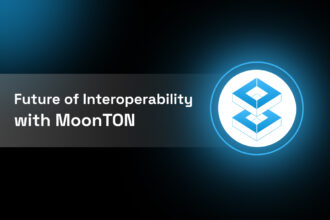Blockchains have been working in silos for much of their existence. Even when cross-chain communication is introduced, it gets limited by the nature of blockchains that are in connection. As a result, people are stuck with a single choice for their crypto holdings and must choose between things like gas cost, security, centralization, or speed. This choice often focuses them to sacrifice some for the others.
In this article, we will try to explore the concept of interoperability, understand why blockchains are basically alienated from each other and explore a few promising solutions that might become leaders in blockchain interoperability applications.
Hyperbridge Interoperability Protocol: The Bridge To Secure & Seamless Cross-Blockchain Transactions
What is Interoperability?
Interoperability in Blockchain Technology refers to the ability of a crypto user to use multiple blockchains for different requirements such as transactions, investments, recreation, and daily expenditure.
Sadly, no blockchain offers these solutions because most of them were developed independent of each other. All blockchains were created using different programming languages, use different consensus mechanisms, follow different node communication protocols and have entirely different function libraries.
Even when two blockchains were developed using the same technology i.e., Ethereum, BNB and Cardano, they differ vastly.
Why Does it Matter?
The current state of interoperability in blockchain technology limits the ability of the user to use different blockchains for different purposes. A user needs different chains to execute different tasks and to prioritize gas spends.
We all know that in the current market, Ethereum is the most secure chain with a million validators, BNB offers the least amount of fees, Cardano supports unparalleled dApp support, Solana settles transactions very fast, and so on. Each of them had been created for a different use, and all serve a different niche. However, as users, we all know that we need each of them for our varying needs and based on their specialization.
In the current scenario, if someone tries to make small payments via BNB Chain but has funds stored in the Ethereum blockchain, they have to first transfer the funds to a CEX or either swap using a DeFi protocol. In both scenarios, there is a complete waste of precious funds for paying gas fees.
If you wonder why tokens don’t readily support cross-chain transfers, read this.
The Current State of Interoperability in Blockchains
However, as technology progresses, the current blockchains are much more compatible with each other. Let us look at a few solutions that provide decent cross-chain communication and also understand their drawbacks or limitations.
Chainlink’s CCIP
Cross-Chain Interoperability Protocol (CCIP) is a cross-chain communication protocol developed by Chainlink to support the free transfer of stablecoins between different blockchains. Initially, it was limited to a few chains but since its launch, it has spread to cover more than 60 blockchains and nearly 150 tokens.
The technology works via a network of router contracts that deploy assets from one chain to another with security provided by Chainlink’s oracle network.
Despite being the most advanced solution in the market, it does not provide wide support for chains outside of the Ethereum ecosystem. Further, the solution relies on external developers to create their own cross-chain solution to add their blockchain to the CCIP network, which leads to slow network growth.
The Ethereum Ecosystem
The Ethereum Ecosystem offers a limited interaction between different L2s and Ethereum through blockchain bridges. Blockchain bridges are solutions that offer cross-chain communication between two EVM-based chains (in Ethereum’s case).
However, they are often unreliable and were the cause of the $625 million Axie Infinity hack which happened because of the compromised Ronin Bridge.
At this point, it is necessary to explain that blockchain bridges are themselves independent chains that are specifically built to serve the purpose of cross-chain asset transfer. They are limited because for each cross-chain communication (say between A and B, there needs to be a separate blockchain bridge with its own set of independent validators. If this solution is generalized for cross-chain communication, there will be several times more bridges than actual blockchains.
How Does a Blockchain Bridge Work, and Why Is It Susceptible to Attacks?
Cosmos’s IBCP
The Inter Blockchain Communication Protocol (IBCP) is a solution developed by the Cosmos Network (which itself is a layer-zero architecture) helps blockchain to securely transfer data (i.e., assets and funds) between two blockchains in a secure manner.
The IBCP manages inter-blockchain communication by adding a transport layer between two chains where data is authenticated before any asset transfer takes place.
This relayer between the blockchains also consists of some off-chain operations, which might not seem fit to many.
Another drawback of this solution is that it doesn’t work on Proof of Work blockchains like Bitcoin, Litecoin, and Dogecoin.
Conclusions
In the current market, blockchain interoperability solutions are limited and do not provide a wide coverage to include chains from different consensus mechanisms. Even when wide coverage exists, like the CCIP, they are limited to a single ecosystem only such as Ethereum.
New solutions are required to provide a bridge between different consensus mechanisms so that a common solution would allow a user to have a single window to avail all the benefits that blockchain technology has to offer.




















